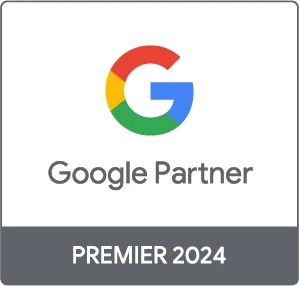What is a Landing Page, and How Does it Work?
Are you wondering “what is a landing page” and how it can help you gain more leads and customers? Don’t worry, we got you.
In today’s blog, we are diving into the magic of landing pages and their benefits for your organization. By the end of this post, you will know what a landing page is, how it can help grow your business and some best practices for creating high-converting landing pages.
Let’s start!
What is a landing page?
A landing page is a web page that appears when you click on a hyperlink. It’s usually the first page that someone sees after clicking on an advertisement or a search result. A landing page is designed to persuade visitors to take specific action, such as signing up for a newsletter, buying a product, or downloading a software program.
Why are landing pages important?
Landing pages are important because they are one of the most effective ways to convert website visitors into customers. The purpose of a landing page is to guide the user towards a specific goal, such as subscribing to your email list or making a purchase. As a result, landing pages are an essential part of any online marketing strategy.
How do landing pages work?
Landing pages work by providing visitors with a specific offer that is relevant to their needs. For example, if you are selling a software program, you might create a landing page that offers a free trial of the software. The landing page should provide visitors with a clear call to action, such as a button that says “Download Now.”
The main two types of landing pages
There are two main types of landing pages: lead capture landing pages and clickthrough landing pages.
Lead capture pages, also called “lead generation”, are designed to collect information from visitors, such as their names and email addresses. This information can be used to contact the visitor later or to add them to a mailing list. Often the hallmark features on lead capture pages include the forms and serve as CTAs. This is how we get leads interested in our business.
Clickthrough landing pages are designed to persuade visitors to take specific actions, such as buying a product or signing up for a service. As the name suggests, clickthrough pages direct visitors to another page after they have taken action.
In your digital marketing strategy, you are going to need both, depending on your goals.

Landing Page Best Practices
Landing pages are an essential part of any online marketing strategy, and there are a few best practices you can follow to make sure your landing pages are effective.
First, always make sure your landing page is relevant to the offer you’re promoting. The page should be focused on one specific topic, and the design should be clean and simple. Keep the content concise and easy to read.
Second, your landing page content needs to be short and sweet, with the language plain and easy to understand and always focused on the reader. Here are some top tips to follow: Perfect the headline and opening paragraph, break up the page with sub-headings, use bulleted lists to detail steps or benefits and keep sentences and paragraphs short.
Third, make sure that the “call to action” is clear and easy to find. The button or link should stand out from the rest of the text on the page, and it should be obvious what needs to be done in order for the visitor to take action.
Fourth, test your landing pages regularly to make sure they’re working correctly. Use different browsers and devices to test how the page looks on different screens, and use A/B testing software to compare different versions of your landing page.
Fifth, optimize your landing pages for search engines so they can rank higher in search results. Include keywords in your title tag and meta description, and use images with descriptive alt text tags. Also, if you prefer you can hire an SEO agency to do the work for you. A group of professionals knows what needs to be done in order for your website to rank first on the SERP.
Finally, make sure you’re tracking your landing page traffic and conversions so you can measure the success of your campaign. Google Analytics is a free tool that allows you to track page views, bounce rate, and conversion rate.
There you have it! These are just a few things to keep in mind when creating landing pages. By following these best practices, you can be sure that your landing pages are effective and help you achieve your desired results.
Lead Generation Landing Pages
A lead generation landing page is a web page that is designed to capture leads through the use of forms or by getting visitors to subscribe to a mailing list. The primary goal of a lead generation landing page is to convert website visitors into leads.
You have to know that several elements should be included on a lead generation landing page to increase conversion rates. These include:
– A headline that clearly states what the offer is
– A form that is short and to the point
– A call to action (CTA) that is clear and benefits-focused
– Images or videos that help to explain the offer
– Social proof in the form of testimonials or customer reviews
– A Thank you page that is shown after a lead has been generated
Lead generation landing pages are an essential part of any lead generation strategy as they provide a way to capture leads from website visitors who may not be ready to make a purchase. By including all of the above elements, you can increase the chances that your lead generation landing pages will convert visitors into leads.
Sales Page
Sales pages are an essential part of any online business. They are used to selling products or services by convincing website visitors to purchase what is being offered.
In order to be effective, a sales page must include several key elements including:
-A headline that grabs attention
-Persuasive copy
-Images or videos that explain the offer
-A call to action that encourages visitors to buy what is being offered.
Sales pages can be used to sell anything from physical products to digital products like e-books or software.
Mobile Landing Page
A mobile landing page is a web page that is designed specifically for mobile devices. Unlike a regular website, which is designed to be viewed on a desktop or laptop computer, a mobile landing page is designed to be viewed on a phone or tablet.
The primary goal of a mobile landing page is to convert website visitors into leads or customers. Several elements should be included on a mobile landing page to increase conversion rates. These include:
– A clear and concise headline that tells visitors what the page is about
– Persuasive copy that highlights the benefits of your product or service
– A call-to-action (CTA) that encourages visitors to take the next step
– An easy-to-use form that collects contact information from leads
– Testimonials and customer reviews are both excellent examples of social proof
If you’re looking to create a high-converting mobile landing page, be sure to include these essential elements. With a well-designed page, you’ll be able to increase leads and customers from your website traffic.
The importance of the “Call to action”
Most people know that a good call to action (CTA) is important for online marketing, but what many don’t realize is how much impact it can have on their bottom line. In fact, when it comes to landing pages, your CTA may be the most important element of all.
A good CTA should be clear and concise, telling the visitor what you want them to do. It should also be compelling, using strong language and emotional appeals to get the reader to take action. And finally, it should be relevant to the offer you’re making, matching the tone and style of your page.
If your CTA isn’t up to par, it could be costing you conversions. Here are a few tips to help you create a strong call to action for your landing pages:
1. Use persuasive language
The words you use in your CTA can make a big difference in how effective it is. A language that evokes positive emotions, such as “discover” or “unlock,” has been shown to perform better than negative words like “stop” or “avoid.”
2. Use first person
When crafting your CTA, using the first person can be more effective than second or third person. For example, “Download my free guide” is better than “Download the free guide.” This small change makes your CTA more personal and less formal, which can help increase conversions.
3. Make it specific
CTAs like “Sign up now” or “Learn more” are much less effective than specific ones that tell the reader what they’ll get by taking action. For example, “Download my free guide to landing pages that convert” is more likely to get clicks than simply “Download now.”
4. Offer a benefit
In addition to being specific, your CTA should also offer a benefit to the reader. What’s in it for them if they take action? For example, “Download my free guide to landing pages that convert” tells the reader not only what they’ll get, but also what the benefit is – in this case, learning how to create landing pages that convert more visitors into leads or customers.
5. Use a strong verb
The verb you use in your CTA can also impact its effectiveness. Strong, active verbs like “discover,” “unlock,” and “boost” have been shown to perform better than weaker verbs like “click,” “learn,” and “download.”
6. Create a sense of urgency
If you want people to take action, it’s important to create a sense of urgency. Phrases like “limited time only,” “while supplies last,” or “act now” can help encourage people to take action before it’s too late. Just be sure not to overdo it – too much urgency can come across as desperate or spammy.
7. Use images
In addition to using strong words, you can also use images to make your CTA more effective. People are more likely to notice and respond to an image than they are to a block of text, so using an eye-catching image can help increase conversions.
8. Use whitespace
When it comes to landing pages, less is often more. Using too much text or too many images can make your page seem overwhelming and reduce the chances that people will take action. Creating white space around your CTA can help it stand out and increase the likelihood that people will click.
9. Make it easy to find
Your CTA shouldn’t be hidden at the bottom of your page or buried in a sea of text. It should be prominently featured so that visitors can easily find it and take action.
10. Test, test, test
The best way to find out what works for your landing pages is to test different versions and see what performs best. Try different placements, colors, images, and copies to see what gets the most clicks. Then, use the winning version on all your future landing pages.

Landing Pages & Conversion Optimization
Conversion optimization is the process of making changes to your landing pages in order to increase the percentage of visitors who take action. This can include changing the text, images, layout, or design of your page.
You have to try different things to see what performs best for your business. Maybe you should use bullet points to your web pages so the prospective customers find it easy to navigate. Whatever you decide to do, be sure that it appeals to the overall digital marketing campaign you have designed.
Also, a good landing page means a higher possibility of converting visitors into customers. And in the end, it is all that matters.
Difference Between a Landing Page and a Homepage
A lot of people think that a landing page and a homepage are the same thing. But there is actually a big difference between the two.
Your homepage is the main page of your website. It’s what people see when they first come to your site. And it should give visitors an overview of what you offer.
A landing page, on the other hand, is a specific page that’s designed to convert visitors into leads or customers. It’s usually used in conjunction with a marketing campaign, and it has one specific goal – to get people to take action.
Landing pages are often used in online marketing campaigns, as they provide a way to directly target potential customers and convince them to take action. Homepages are generally not as effective at converting visitors into leads or customers, as they tend to be more general and less focused.
Conclusion
A landing page is the first and most important step in turning a visitor into a customer. It’s what you use to persuade people to take action, whether that means subscribing to your email list, downloading a white paper, or buying your product.
The key to a successful landing page is persuasion. It needs to be clear, concise, and convincing. The layout should be easy to follow, and the call-to-action (CTA) should be impossible to miss.
If you want to learn more about landing pages and conversion optimization, be sure to check out our blog for the latest tips and tricks or contact us directly.
FAQ What is a landing page






